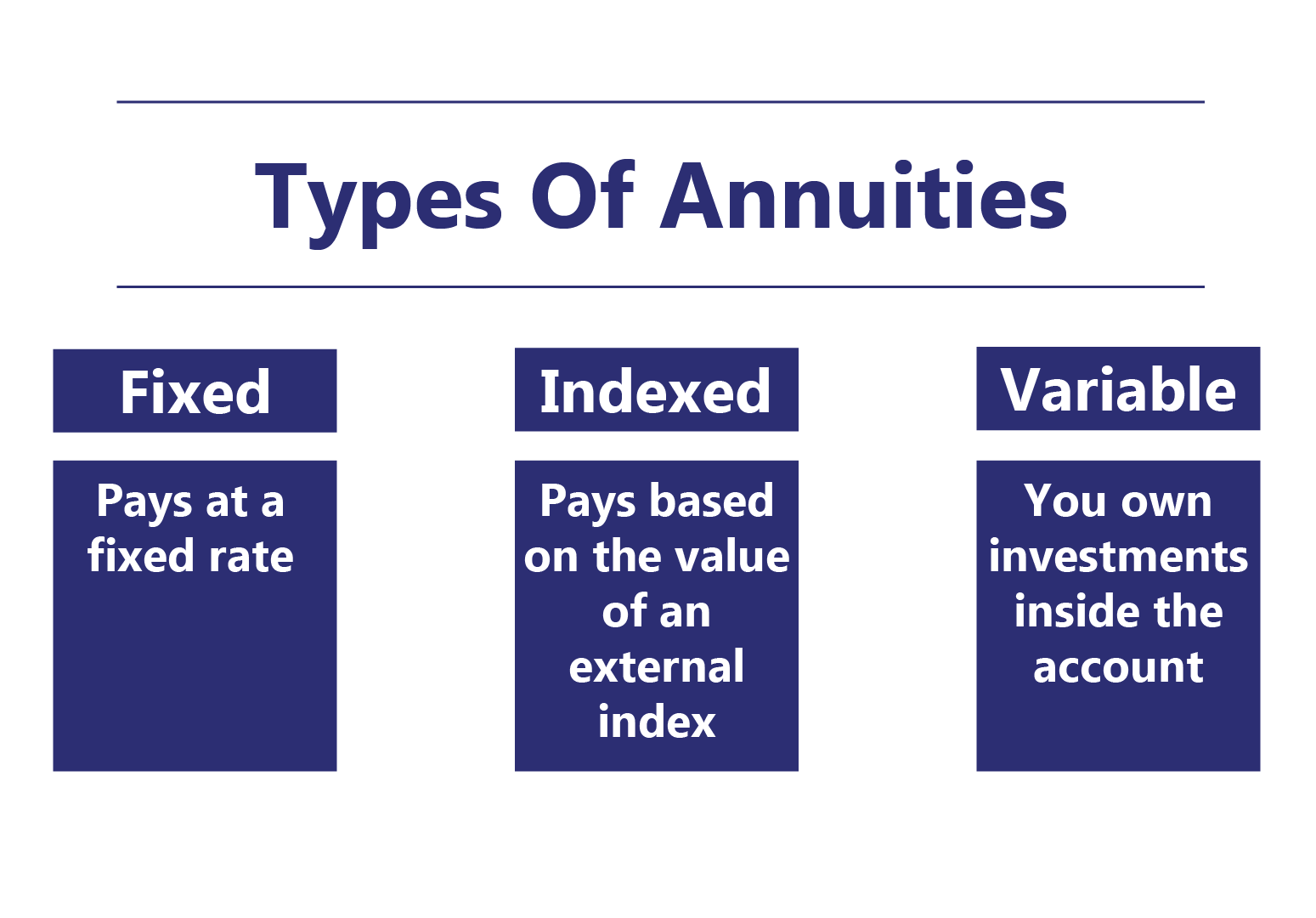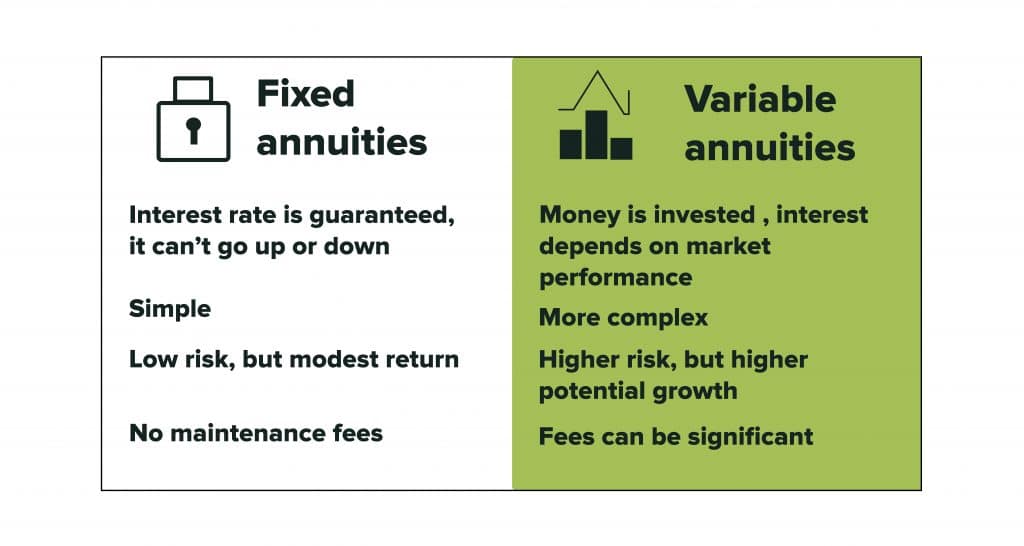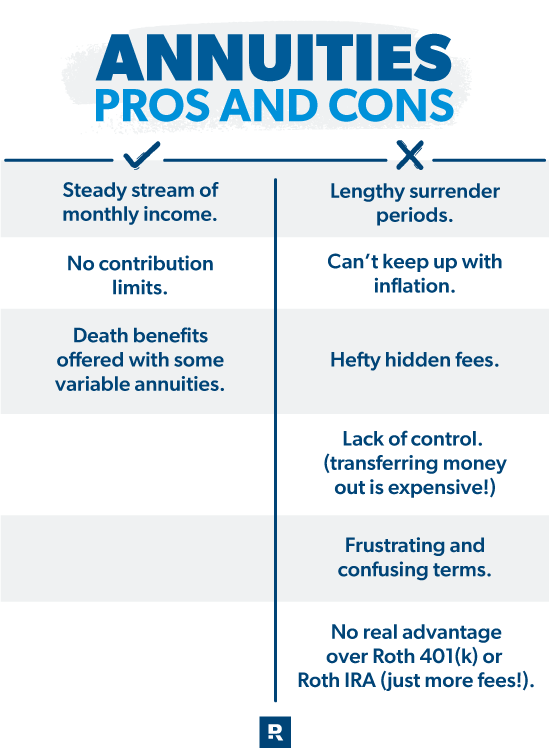All Categories
Featured
Table of Contents
Just as with a repaired annuity, the owner of a variable annuity pays an insurance firm a lump sum or series of payments for the pledge of a series of future settlements in return. As stated over, while a repaired annuity expands at a guaranteed, constant price, a variable annuity grows at a variable price that depends upon the performance of the underlying financial investments, called sub-accounts.

During the buildup stage, assets bought variable annuity sub-accounts expand on a tax-deferred basis and are strained just when the contract owner takes out those revenues from the account. After the build-up phase comes the earnings stage. In time, variable annuity properties should theoretically enhance in value up until the contract owner chooses he or she wish to start withdrawing money from the account.
The most significant problem that variable annuities normally present is high expense. Variable annuities have a number of layers of charges and expenses that can, in aggregate, develop a drag of up to 3-4% of the agreement's value each year.
Decoding Fixed Annuity Vs Variable Annuity A Closer Look at Fixed Indexed Annuity Vs Market-variable Annuity What Is the Best Retirement Option? Advantages and Disadvantages of Deferred Annuity Vs Variable Annuity Why Choosing the Right Financial Strategy Is Worth Considering Annuity Fixed Vs Variable: Explained in Detail Key Differences Between Variable Annuity Vs Fixed Annuity Understanding the Rewards of Tax Benefits Of Fixed Vs Variable Annuities Who Should Consider Fixed Index Annuity Vs Variable Annuity? Tips for Choosing the Best Investment Strategy FAQs About Planning Your Financial Future Common Mistakes to Avoid When Planning Your Retirement Financial Planning Simplified: Understanding Your Options A Beginner’s Guide to Fixed Interest Annuity Vs Variable Investment Annuity A Closer Look at Fixed Vs Variable Annuity
M&E expense fees are computed as a percent of the contract worth Annuity companies hand down recordkeeping and various other administrative prices to the agreement proprietor. This can be in the kind of a flat annual fee or a percent of the contract worth. Administrative charges may be included as component of the M&E risk charge or might be assessed independently.
These charges can vary from 0.1% for easy funds to 1.5% or more for actively handled funds. Annuity contracts can be personalized in a number of ways to offer the particular requirements of the contract proprietor. Some typical variable annuity bikers include guaranteed minimum build-up benefit (GMAB), assured minimum withdrawal advantage (GMWB), and guaranteed minimum revenue benefit (GMIB).

Variable annuity payments give no such tax obligation deduction. Variable annuities have a tendency to be highly inefficient lorries for passing wealth to the future generation due to the fact that they do not take pleasure in a cost-basis change when the initial agreement owner dies. When the proprietor of a taxable financial investment account dies, the expense bases of the financial investments kept in the account are gotten used to show the market prices of those financial investments at the time of the proprietor's death.
Analyzing Fixed Annuity Or Variable Annuity Key Insights on Your Financial Future What Is Indexed Annuity Vs Fixed Annuity? Benefits of Choosing the Right Financial Plan Why Fixed Vs Variable Annuity Pros Cons Is a Smart Choice How to Compare Different Investment Plans: Explained in Detail Key Differences Between Variable Vs Fixed Annuities Understanding the Rewards of Variable Annuities Vs Fixed Annuities Who Should Consider Immediate Fixed Annuity Vs Variable Annuity? Tips for Choosing the Best Investment Strategy FAQs About Fixed Income Annuity Vs Variable Growth Annuity Common Mistakes to Avoid When Choosing a Financial Strategy Financial Planning Simplified: Understanding Annuities Variable Vs Fixed A Beginner’s Guide to Immediate Fixed Annuity Vs Variable Annuity A Closer Look at Annuity Fixed Vs Variable
As a result, beneficiaries can acquire a taxed financial investment portfolio with a "tidy slate" from a tax obligation perspective. Such is not the instance with variable annuities. Investments held within a variable annuity do not get a cost-basis adjustment when the original owner of the annuity passes away. This suggests that any kind of accumulated unrealized gains will be handed down to the annuity proprietor's successors, together with the linked tax concern.
One considerable issue connected to variable annuities is the possibility for disputes of rate of interest that may exist on the part of annuity salespeople. Unlike an economic expert, that has a fiduciary task to make investment choices that profit the client, an insurance coverage broker has no such fiduciary obligation. Annuity sales are extremely profitable for the insurance coverage professionals who market them due to high upfront sales commissions.

Numerous variable annuity agreements contain language which puts a cap on the percentage of gain that can be experienced by particular sub-accounts. These caps protect against the annuity owner from fully taking part in a part of gains that can otherwise be enjoyed in years in which markets produce substantial returns. From an outsider's viewpoint, it would appear that capitalists are trading a cap on financial investment returns for the abovementioned ensured flooring on financial investment returns.
As kept in mind above, surrender fees can severely limit an annuity proprietor's capability to relocate possessions out of an annuity in the very early years of the contract. Further, while many variable annuities enable agreement proprietors to take out a specified quantity throughout the buildup phase, withdrawals beyond this amount commonly cause a company-imposed cost.
Withdrawals made from a set rate of interest investment choice can also experience a "market price modification" or MVA. An MVA changes the worth of the withdrawal to mirror any kind of modifications in rate of interest prices from the moment that the money was purchased the fixed-rate option to the moment that it was taken out.

Frequently, also the salespeople that market them do not completely recognize just how they work, and so salespeople occasionally take advantage of a purchaser's feelings to sell variable annuities instead of the benefits and suitability of the items themselves. Our team believe that investors ought to completely understand what they have and exactly how much they are paying to have it.
Exploring Variable Annuity Vs Fixed Annuity A Comprehensive Guide to Investment Choices Breaking Down the Basics of Investment Plans Advantages and Disadvantages of Different Retirement Plans Why Variable Vs Fixed Annuities Is Worth Considering How to Compare Different Investment Plans: Explained in Detail Key Differences Between Pros And Cons Of Fixed Annuity And Variable Annuity Understanding the Risks of Fixed Indexed Annuity Vs Market-variable Annuity Who Should Consider Immediate Fixed Annuity Vs Variable Annuity? Tips for Choosing Pros And Cons Of Fixed Annuity And Variable Annuity FAQs About Fixed Annuity Or Variable Annuity Common Mistakes to Avoid When Planning Your Retirement Financial Planning Simplified: Understanding Your Options A Beginner’s Guide to What Is A Variable Annuity Vs A Fixed Annuity A Closer Look at How to Build a Retirement Plan
Nevertheless, the exact same can not be stated for variable annuity assets held in fixed-rate investments. These possessions legally come from the insurer and would certainly consequently go to risk if the company were to stop working. Similarly, any kind of guarantees that the insurance policy company has actually consented to offer, such as an ensured minimal revenue advantage, would certainly be in question in the occasion of a business failure.
Potential buyers of variable annuities should comprehend and take into consideration the monetary condition of the providing insurance firm prior to entering right into an annuity agreement. While the benefits and drawbacks of numerous types of annuities can be discussed, the real problem surrounding annuities is that of suitability.
Nevertheless, as the stating goes: "Purchaser beware!" This write-up is prepared by Pekin Hardy Strauss, Inc. Indexed annuities explained. ("Pekin Hardy," dba Pekin Hardy Strauss Wide Range Administration) for informative functions just and is not intended as a deal or solicitation for business. The information and information in this short article does not constitute lawful, tax obligation, accounting, financial investment, or other expert advice
Table of Contents
Latest Posts
Exploring Fixed Index Annuity Vs Variable Annuity A Closer Look at How Retirement Planning Works Defining What Is Variable Annuity Vs Fixed Annuity Advantages and Disadvantages of Variable Annuities V
Decoding Variable Annuity Vs Fixed Indexed Annuity Key Insights on Fixed Vs Variable Annuity Pros Cons What Is Annuities Variable Vs Fixed? Benefits of Variable Vs Fixed Annuity Why Variable Annuity V
Breaking Down Variable Annuity Vs Fixed Annuity A Closer Look at Pros And Cons Of Fixed Annuity And Variable Annuity What Is Indexed Annuity Vs Fixed Annuity? Pros and Cons of Fixed Interest Annuity V
More
Latest Posts